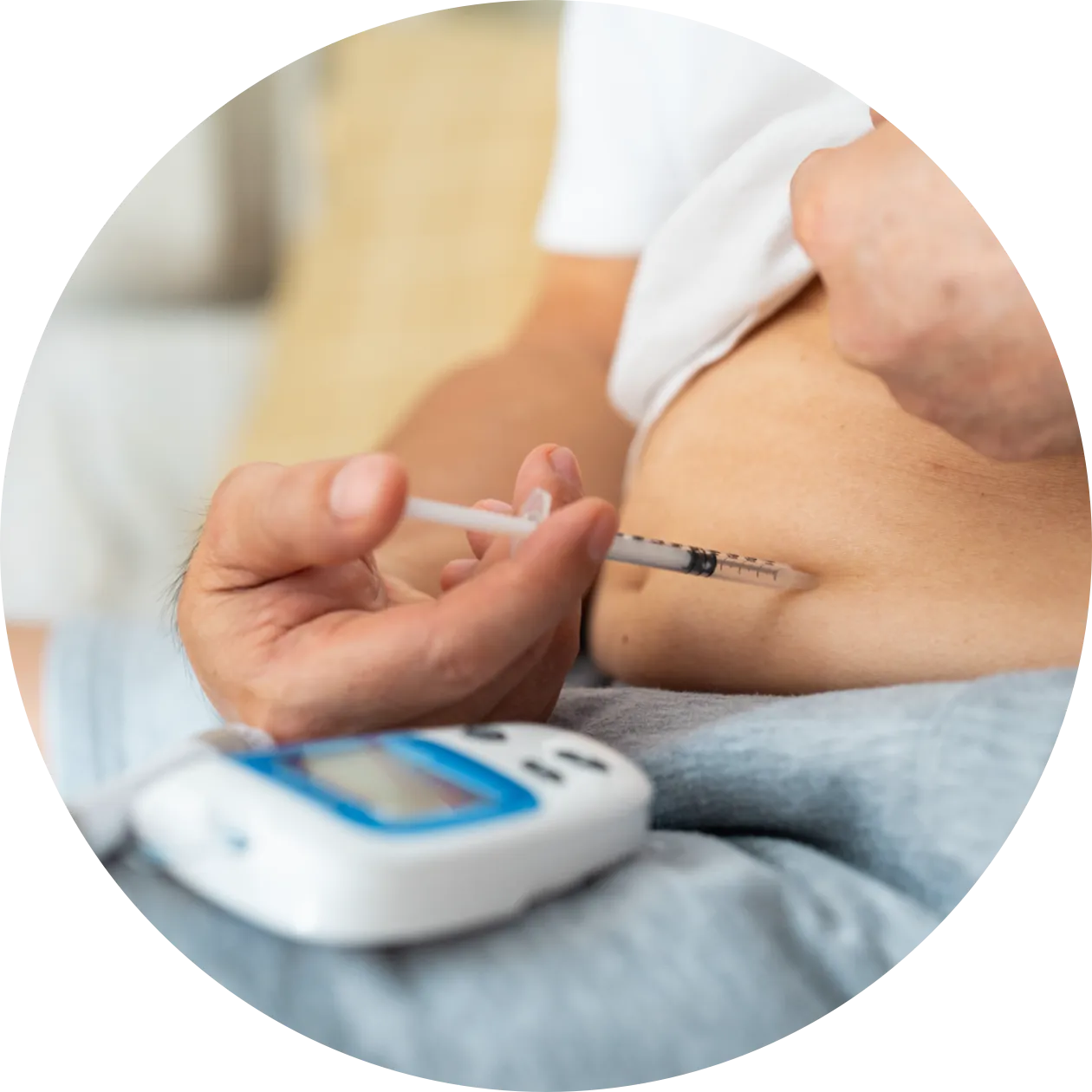Impact of Obesity
One of the most common and significant health issues in the U.S.
Obesity is a chronic, progressive disease involving an excessive amount of body fat and increases the risk for many other health problems, such as type 2 diabetes, high blood pressure, heart disease, stroke, joint problems, liver disease, gallstones, some types of cancer, and sleep and breathing problems, among other conditions.

Current Approaches
Weight-loss medications are variable, causing
adherence issues.
Weight-loss medications are meant be used alongside diet, exercise, and behavior improvements and do not work the same for everyone. Once medication is stopped, which can happen often with patients suffering from obesity, weight is quickly regained to the level seen with lifestyle changes alone.
High dose GLP-1 receptor agonists comprise the first medication class to show weight loss of up to 15-20% with acceptable safety and tolerability profiles. If used consistently, they have the potential for longer term results.
Our Solution
Designed for continuous dosing, extending duration
of treatment.
NPM-139 is a semaglutide implant candidate currently being designed to be easily inserted in a quick, outpatient procedure – and to provide continuous dosing for at least 6 months, helping patients keep the weight off longer and avoid the additional dosing burdens associated with alternative therapies
Impact of Type 2 Diabetes
A complex, chronic metabolic condition.
Type 2 diabetes impairs the way the body regulates and uses sugar (glucose) as a fuel, leading to disorders of the circulatory, central nervous and immune systems. Severe manifestations include blindness, kidney failure, neuropathy, cardiovascular disease and death in severe manifestations. Unfortunately, non-adherence is common in many chronic diseases, including type 2 diabetes
The American Diabetes Association (ADA) encourages treatment options that address non-adherence

Current Approaches
Complex, costly treatment options can lead to poor adherence.
Factors such as low adherence, potentially due to administration challenges, may explain why many therapies do not reach the efficacy seen in clinical trials, leading to increased economic costs.
Today, one of the most promising and increasingly utilized class of drugs for the treatment of type 2 diabetes is GLP-1 receptor agonists, which are proven to enhance insulin sensitivity and secretion.
Our Solution
A miniature, long-term implant with convenient administration.
NPM-133, our GLP-1 receptor agonist implant under development for type 2 diabetes, is designed to ensure continuous dosing for at least 6 months. It can be inserted in a quick, outpatient procedure by a healthcare professional and eliminate the inconvenience of taking daily pills and/or weekly injections for patients with type 2 diabetes.
Impact of Canine and Feline Obesity
An increasingly prevalent challenge for companion cats and dogs and their owners.
Canine and feline obesity is a considerable and growing challenge in the U.S. and globally, contributing to a host of associated health risks. Inactive, overfed household pets are particularly vulnerable to diabetes and its associated complications. They are also at higher risk for developing chronic pain from orthopedic disease, decreased respiratory function, reduced mobility, and a shortened lifespan. Beyond medical risks, excess weight diminishes overall quality of life, curtails play and social interaction, and places significant emotional and financial strain on pet owners and veterinary care systems.

Current Approaches
Far fewer treatment options for dogs and cats versus humans.
Diet alteration alone is typically not sufficient treatment, and household dogs and cats have few options for exercise. Concerned pet owners and veterinarians often resort to using expensive and untested human medications. The method of administering current medications also proves to be both difficult for pet owners and highly stressful for their pets. Canine and feline treatments simply haven’t evolved as far as human treatments for obesity and weight management.
Our Solution
A small, simple implant with extended duration.
Under development by our partner Okava Pharmaceuticals, OKV-119 is a miniature implant designed to deliver continuous doses of medication for at least 6 months to dogs and cats that are obese or overweight. The implant can be inserted in a quick and easy veterinary procedure, potentially ensuring significantly lower stress for owners and their pets along with consistent long-term results.